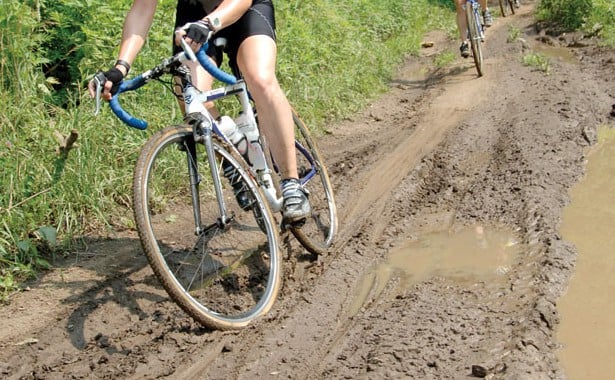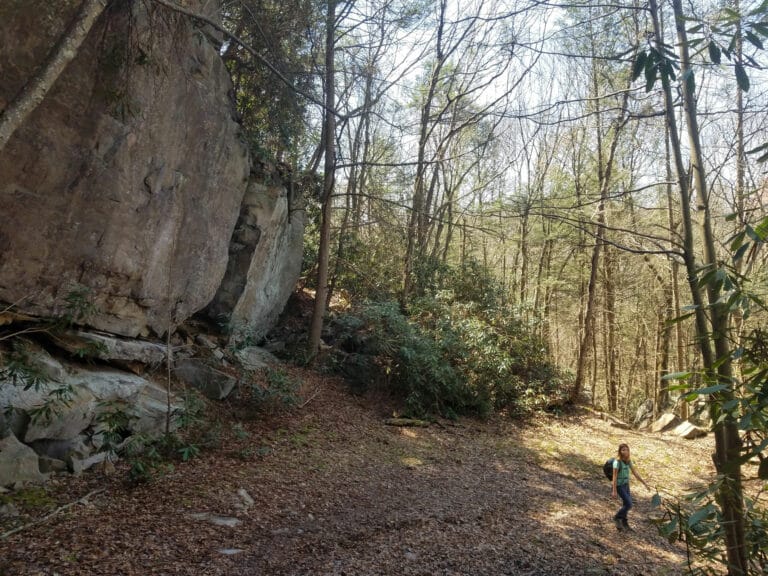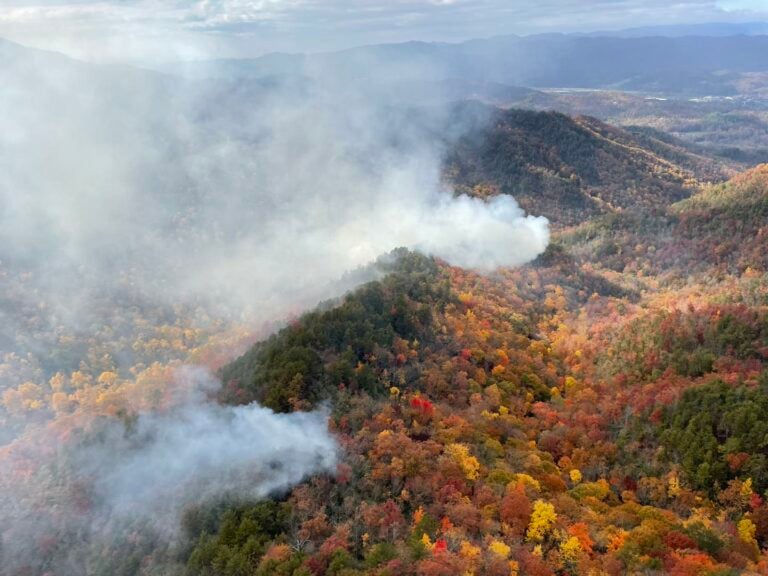Photo: JR Petsko
Growing up on the high plains of Northern Colorado in the 1950s, I didn’t have a lot of choices about where I could ride my 24-inch Schwinn. My hometown was so small I could ride from city-limit sign to city-limit sign in less than 20 minutes.
Two U.S. highways intersected in town, but with a 70 mph speed limit and narrow shoulders outside the city limits, those paved roads were far too dangerous for bike riders.
The safest place to ride was on the many dirt roads that formed a huge grid almost all the way to the Kansas border, God’s chessboard with each square “section” exactly a mile on each side.
The Schwinn was what we would now call a single-speed and its tires were wide, but narrower than the balloon type we associate with cruisers. I could pump them rock-hard at the Sinclair gas station and they would stay that way for a month.
I rode for hours past cornfields that seemed endless, especially in the summer heat. I never thought to bring a water bottle, as the irrigation ditches that paralleled the roads were flowing with chilly water, melted snowpack from the Rockies that flowed from the Continental Divide.
Farmers would often offer a cold slice of watermelon to slake my thirst and a few nubby cucumbers to take home to my mom.
Today’s parents might blanch at the thought of letting a 10-year-old ride his bike for hours far from home, but it was my 70-year-old grandmother who bought me the bike and told my parents it was good for a boy with big dreams to start exploring the world on his own.
That boy grew up and went to the big university in Boulder and left the Schwinn for a slick Italian ten-speed with finger-thin tires and down-tube shift-levers. I tried riding it on some of the steep dirt roads west of town, but all I got was flat tires and a hippie hitch-hike home.
Twenty-five years and a couple of kids later I discovered the mountain bike and felt like the kid version of myself, digging the tread into dirt, hopping rocks and straining like Spartacus on rocky, rooty climbs in the Shenandoahs, laughing for 24 hours at Canaan.
I tried traditional cyclocross in the cooler months and soon found that while I was quick on the pedals, I just could not understand the need to jump off the bike, carry it over some upright wooden planks and then jump back on. Rinse and repeat and repeat.
It didn’t take long for me to realize that what I liked most about ‘cross was warming up before races on the dirt roads and paths near most courses. It brought me back to my youth and the freedom I enjoyed on hot summer days, watermelon juice stains on my dusty t-shirt.
Fast-forward to 2011 and I’m still riding my cross bikes on dirt and gravel roads. The Appalachians are thick with dirt roads that hearken back to the early days of the Tour de France, those dirty-faced riders with spare tubes wrapped around their shoulders, a smoldering Gauloise hanging from their wind-chapped lips.
The first 30 years of Le Tour were held on mostly dirt roads and even today all three Grand Tours feature dirt sections, the Giro d’Italia’s Eroica stage the most famous of the dirt challenges.
The first official long-distance dirt race is the Three Peaks race in the U.K., which includes the highest peaks in Scotland, Wales and England. The course had long been a hiking mecca, but after 14-year-old Kevin Watson rode his bike over the path in 1959, it became the most famous endurance cyclocross race in the world.
Three Peaks inspired U.S. races, including America’s biggest dirt event, the infamous Iron Cross in Pennsylvania’s Michaux Forest, and The Hilly Billy Roubaix in Morgantown, W.Va. The Hilly Billy includes gravel, creek crossings, potholes the size of cars and climbs that would make a Tour de France rider cry.
“Once mountain biking took off and all that, I was still mostly training on the roads,” says Gunnar Shogren, Morgantown resident and one of America’s toughest bike racers. “We get pretty big kicks taking ‘road’ rides on some of the really beat-up roads.” Shogren and wife Betsy took on the 200-mile Dirty Kanza Race in Kansas this year and, for one of the few times in his career, Gunnar bit off more than he could chew. Shogren suffered mightily and for one of the few times in his career, dropped out before the finish, shriveled from the relentless heat and wind.
Despite spending more than an hour tending to her husband, Betsy took first-place in the women’s division. On a single-speed bike.
Those of us lucky enough to live in the Blue Ridge can ride just about anywhere on dirt roads, plus the multiple dirt paths that run along our rivers, lakes, canals and railroad tracks.
“It appeals to me for a variety of reasons,” says Betsy Shogren. “The camaraderie associated with dirt road racing, and the fact that you never know what will be around the next corner, be it a car-eating bog, creek, the run-up from Hell, your husband lying in a ditch, or a cow. Also, you can see some amazing sights when you are miles and miles from civilization.”
For me, the allure of cyclocross without barriers is the freedom inherent in the sport, whether racing or just exploring. It hits that sweet spot between full-on peloton road racing and the individualism of mountain biking.
And it always reminds me of cold, ripe watermelon on a hot summer day.
How to Race Dirt Roads
If you have the nerve and legs to ride in a dirt road race, the best place to get started is the American UltraCross Championship Series (ultraxc.com) that operates in the Appalachians. The four races include the Hilly Billy Roubaix in June near Morgantown, WV; the Three Peaks Ride near Beech Mountain, NC in September; the classic Iron Cross in October in western Pennsylvania’s Michaux State Forest and the Southern Cross in Georgia. Some clubs, such as the Shenandoah Valley Bicycle Coalition of Harrisonburg, Va., hold an annual dirt road race called Harris-Roubaix and is usually held in March.
Most racers prefer sturdy cyclocross bikes that have climbing gears and wide, small-knobbed tires. Cyclocross auxillary brake levers on the handlebars come in handy on rough descents. Spare tubes and a tool kit are essential; support help is often scarce in these back road events. You should know how to fix a flat tire, a broken chain and straighten a bent wheel rim. Check with organizers before bringing your mountain bike: the ethos of dirt road racing is in the combination of a rigid road-type bike on gnarly dirt roads.








